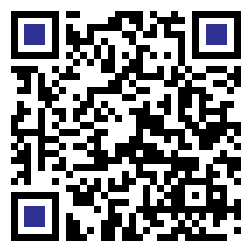Pemanfaatan Algoritma Pembelajaran Pola Karakter Menggunakan Metode Hebb Rule
DOI:
https://doi.org/10.54367/means.v8i2.3061Keywords:
Learning Algorithms, Activation Function, Hebb Rule Method, Weight value, BiasedAbstract
The neuron model will experience difficulties when it encounters complex functions, this is because determining the weight w and threshold value ø must be processed analytically. The Heb Rule method finds a way to calculate the weight value w and bias value which can be processed easily without carrying out a training process first. The Hebb Rule algorithm is the oldest method with a work process using learning and supervision methods. The Hebb Rulu architecture is the same as the McCulloch-Pitts network architecture in that several input units are connected to output units, equipped with a bias value. The problem that often occurs in research is the difference between the Hebb Rule network value pattern and the specified target value due to the incorrect weight initialization process in the calculation process. The aim of the research is to obtain pattern results in accordance with the predetermined targets. Based on the input pattern which consists of pattern 1, pattern 2, pattern 3 and pattern 4, all patterns can be read by the system. The final pattern results are, P1=1, P2=2, P3=1, P4=1.References
Andana, A., Widyati, R., & Irzal, M. (2018). Pengenalan Citra Tulisan Tangan Dengan Metode Backpropagation. Jurnal Matematika Terapan, 2(1), 36–44. http://journal.unj.ac.id/unj/index.php/jmt/article/view/7166
Faisol dkk. (n.d.). Jurnal 37 Aplikasi Hebb pengenalan huruf.pdf.
Jasmir, S.kom, M. ko. (2013). Analisis Metode Heteroassociative Memory untuk Mendiagnosa Penyakit Maag. Media Processor, 8(2), 1–14.
Mulyana, T. (2015). Segmentasi Citra Menggunakan Hebb-Rule Dengan Input Variasi Rgb. Jurnal Teknologi Informasi, Vol. 1(No. 1), 30–39.
Nasir, M., Amri, & Maulina, I. (2019). Pengenalan Aksara Isyarat Menggunakan Metode Hebb Rule. Jurnal Infomedia, 4(1), 28–32.
Pangaribuan, Y., & Sagala, M. (2017). Menerapkan Jaringan Saraf Tiruan untuk Mengenali Pola Huruf Menggunakan Metode Perceptron. Jurnal Teknik Informatika UNIKA Santo Thomas, 2(479), 53–59. http://103.76.21.184/index.php/JTIUST/article/view/191
Rozi Meri, D. (2022). Jaringan syaraf tiruan menggunakan algoritma hebb rule untuk diagnosa penyakit kulit manusia. 6(2), 78–87.
Setiawan, D., & Zakki Falani, A. (2020). Pemanfaatan Artificial Neural Network Dengan Metode Hebb Rule Untuk Pengenalan Bahasa Isyarat Indonesia Statis. 12(1), 9–15.
Wati, R. K., & Irsyad, H. (2021). Pengenalan Aksara Arab Menggunakan Metode JST Dengan Fitur HOG Dan LBP. Jurnal Algoritme, 2(1), 39–54.
Yanti, F., & Sutrisna, J. (2017). Perbandingan Saham Hang Seng dan Nikkei Menggunakan Algoritma Hebbian. Jurnal Informatika Universitas Pamulang, 2(1), 7. https://doi.org/10.32493/informatika.v2i1.1499
Husna, L., & Rizki, S. N. (2023). Pemanfaatan JST Pengenalan Keaslian Pola Tanda Tangan untuk Pencegahan Tindakan Pemalsuan Tanda Tangan. 08, 116–124.
Downloads
Published
How to Cite
Issue
Section
License
Copyright (c) 2023 Silvilestari

This work is licensed under a Creative Commons Attribution 4.0 International License.














